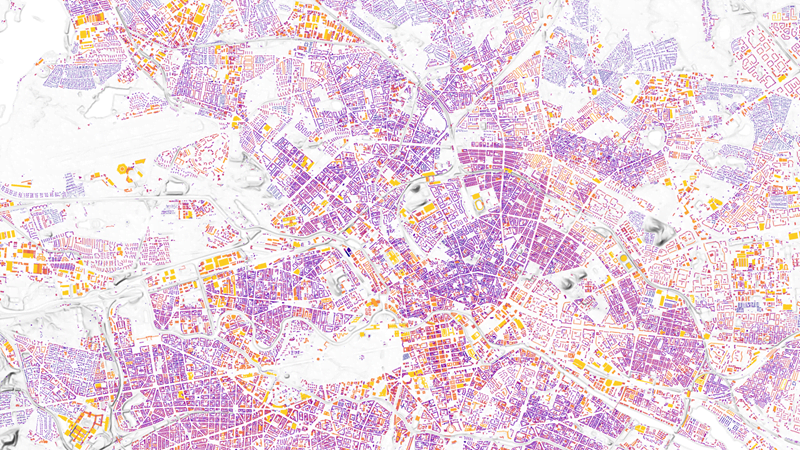
Are you thinking about installing a photovoltaic system on your own roof? The new solar atlas with current data specifically shows regions that are suitable for solar systems.
What annual yield can I expect if I use solar energy? Many homeowners in Germany ask themselves this question.
Companies, political decision-makers and property owners are also interested in the potential of photovoltaics (PV). The Solar Atlas of the German Aerospace Center (DLR) now provides information.
Solar Atlas: Solar systems are worthwhile in these regions
How high is the potential yield of a PV system? By recognizing how roofs are aligned, the model calculates the theoretical energy production depending on the hours of sunshine. This shows the potential for solar roofs in Germany. The results are available free of charge at eosolar.dlr.de. They can be displayed in various ways:
- Federal states
- Counties
- Communities
- Building
The solar roof potential is measured in megawatt hours per year and is color-coded: dark purple represents the lowest potential and light orange represents the highest potential. There are eight levels in between.
How accurate is the solar atlas?
In order to determine the solar energy potential for around 20 million buildings, scientists at DLR's Earth Observation Center (EOC) linked and evaluated current aerial photographs and geospatial information using machine learning methods.
The data volume amounts to several terabytes. This includes digital aerial photographs without distortion with a resolution of 20 centimeters and surface models with a high resolution of one meter – provided by the Federal Office for Cartography and Geodesy.
Annekatrin Metz-Marconcini heads the EO Solar project and explains: “To describe the current expansion potential for solar energy, we calculate the possible electrical output based on the hours of sunshine, the radiation intensity, the orientation of the roof surfaces and the shading by neighboring buildings or vegetation.”
The Solar Atlas supports the energy transition
Anke Kaysser-Pyzalla, Chairwoman of the DLR Executive Board, sees the EO Solar project and the Solar Atlas as a successful interplay between earth observations and climate protection:
The satellite-based information provided by the DLR supports the energy transition. This makes it a driver for innovative products and business models.
For “effective strategies and instruments for the expansion of solar systems on roofs,” decision-makers rely on precise inventory data and the exact expansion potential.
Also interesting:
Source: https://www.basicthinking.de/blog/2024/06/14/solaratlas-diese-karte-zeigt-dir-in-welchen-regionen-sich-solaranlagen-lohnen/


